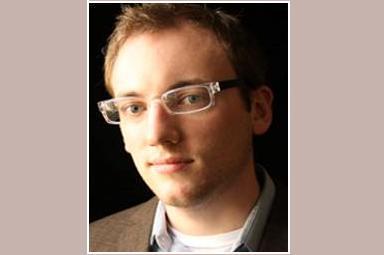PHD Perspectives: Where Does the Internet End? - Drew Breunig - MediaBizBloggers

In a study released last week, Harvard Business School professors John Deighton and John Quelch set out to determine how much the Internet is worth. Working towards their appraisal, they spend the bulk of their paper addressing a question essential to their goal and ultimately more interesting: where does the Internet begin and where does it end?
Deighton and Quelch never really manage to draw a firm line in the sand. Despite their best efforts, they issue several valuations. For those keeping score at home, the Internet is worth somewhere between $300 and $680 billion. Clearly, there isn't an easy delineation between the Internet and everything else.
Despite this, most businesses (media and otherwise) operate as if there's a hard and fast line between the online and offline worlds. Budgets are often meted out as if the two never meet. As a result, departments furiously guard their respective fiefdoms, further encouraging the disconnect between the two sides.
The existence of this hard divide is a tragedy. Because the gray area between the Internet and everything else is where innovation occurs and new value is born. Businesses that have learned to optimize themselves within the blurred edge of the Internet reap huge benefits, while ones that ignore this balancing act fall by the wayside. And while businesses and agencies continue to divide their departments to the extremes of either online or offline, consumers are steadily embracing the blurred edge between the two. In fact, most of them are already acclimated to this digital borderland.
Balancing on the Edge of the Internet: Apple's Ecosystem
To witness the benefits that come with balancing on the edge of the Internet, look no further than Apple. But to understand the scale of Apple's success, we first need to revisit companies that ignored the balancing act and insisted on business as usual.
On 4th St. and Market in San Francisco, the Virgin Megastore sits abandoned and empty. The headphones from empty listening stations hang tangled next to piles of unused mannequins. Half a block down, hand-painted signs advertise off-brand, wholesale menswear in what used to be a CompUSA. Five years ago, both stores would be packed with shoppers. Today, they're neglected relics of another age.
Neither Virgin nor CompUSA's markets disappeared. Rather, they just shifted into the blurry edge of the net. Their continued existence (and vitality) can be seen across the street from Virgin, at the Apple Store. Here, the Macs once sold at CompUSA are gateways to iTunes, which sells every bit of content Virgin once housed.
The inside of the Apple Store is a madhouse. An employee lectures from a theater in back while one-on-one tutoring sessions take place to the side. The Genius Bar is swamped. You'd have to push through two rows of people just to make it to the counter. Downstairs, away from the help areas, every computer on display is occupied. Apple staff are everywhere.
Apple understands how to balance on the edge of the Internet. The store is dedicated to tactile and personal interactions with high-ticket items that generally aren't purchased by consumers online: MacBooks, iPhones, iPods, etc. Everything else Apple sells is sold online through the high-ticket items catered to in-store. It's a perfectly balanced ecosystem. Each channel drives the other.
All of this is immensely successful: according to Bloomberg, Apple increased revenue at its stores by 2.5 percent in the first six months of this year, to a grand total of $3 billion. Sales for the rest of the retail industry, however, fell 9.2%. Digitally, Apple can't be touched: NPD estimates iTunes accounts for 25% of all the music sold in the US and 69% of all digital music total.
Consumers Already Balance their Behaviors
Apple's success illuminates a greater, game-changing consumer insight: people are already balancing on the edge of the Internet. They have digitally optimized their lives, moving offline behaviors online when it makes sense and using each channel to support their actions on the other. According to a Forrester report released last week, 70% of U.S. consumers research products online and purchase them offline. For most of these consumers, adding one retail channel doesn't eliminate the other. Rather, more purchases are made in total, with even savvy online shoppers consistently reserving certain purchases to be purchased offline. Which purchases? The same high-ticket items that Apple stocks in store: computers, cell phones, and televisions.
Apple has perfected the digital balancing act better than most. It smartly focused its business around music, which is easy to digitally distribute. But as broadband spreads, smart phones become ubiquitous, and consumers further adapt to digital living, more markets will be overtaken by the edge of the Internet. Video, in the form of television and cinema, seems a likely candidate. Already we're seeing glimpses of the future marketplace: Major League Baseball is offering a multichannel video solution that is simply incredible and Netflix is embracing digital video as fast as the movie studio lawyers let them.
But wherever the borders of the Internet are drawn, understanding their mutability is key to designing smart strategies. As we can see with Apple, when channels drive each other the ecosystem is worth much, much more than the sum of its parts.
Drew Breunig, Senior Account Planner, PHD Media, an Omnicom Company. You can follow Drew @ http://twitter.com/dbreunig

